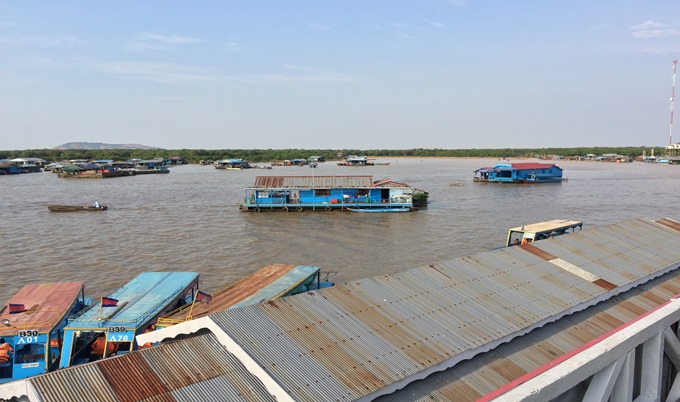sandmining Tonle Sap Lake
Sand mining reducing the flow of Southeast Asia’s largest lake
Published on: 10 November 2025
A new study co-led by Newcastle University highlights how sand mining is endangering the normal functioning of the largest freshwater lake in Southeast Asia.
The Tonle Sap Lake (TSL) in Cambodia is one of the most ecologically diverse lake ecosystems globally, and is the fourth most productive in terms of fish productivity.
Since 1997 the TSL has been recognized as a UNESCO World Heritage Biosphere Reserve, serving as a habitat for globally significant populations of endangered amphibians, reptiles, mammals, and birds, spanning a diverse array of over 800 species.
The lake is sustained by a significant annual flood pulse that reverses the direction of flow along the Tonle Sap River that fills the lake during the monsoon and subsequently returns freshwater to the downstream delta during the dry season. This flood pulse is critical for sustaining the lake’s biological productivity and biodiversity, and is also integral to regulating water systems and water levels across the entire Mekong delta, home to 23 million people.
However, recent observations have highlighted changes in the timing and (reduced) duration of the reverse flow into the TSL, which has reduced the lake’s seasonal inundation.
The study, which was co-led with Loughborough University, shows that between 1998 and 2018, riverbed lowering of the Mekong River mainstem, driven by rampant sand mining and upstream sediment trapping, has reduced the reverse flow volumes by between 40 and 50%.
The study authors explain that the normal functioning of the annual reverse flow is becoming compromised and the observed decline cannot be explained by changes in hydroclimate or movement of water alone and instead must be driven by other factors too, including sand mining and changes in river channel morphology.
Sand mining is the practice of extracting sand from the riverbed, to be used in construction or manufacturing.
Dr Chris Hackney, Senior Lecturer in Physical Geography, Newcastle University, said: "The Tonle Sap Lake is vitally important for ecosystems and communities around Cambodia. Over the past few years, local communities have noticed the lake hasn't filled as much as it used to and ecosystems that rely on prolonged flood seasons are under increasing stress. If the TSL ecosystems are to be preserved, then focus needs to be placed on maintaining or increasing river bed levels in the Mekong."

Dr Quan Quan Le, Research Associate in Delta Flood Risk at Loughborough University, said: “Rapid urban growth has fuelled a global surge in a demand for construction sands, increasing river sand mining rates. Our study finds that this intensive sand extraction, combined with sediment trapped by dams in the Lower Mekong basin, has already weakened the Tonle Sap Lake’s flood pulse, causing lasting environmental harm and underlining the urgent need for sustainable sediment management to ensure that these future projections are not realised.”
Projections to 2038, with additional riverbed lowering driven by ongoing sand mining, predict reverse flow declines of around 69% compared to 1998.
Specifically, the reduced reverse flows increase paradoxically flows to the Mekong delta by ~26 km³ during the monsoon (June-November), heightening flood risk, while decreasing dry-season flows (December-May) by ~59% contribute to intensified saltwater intrusion and diminished agricultural yields across the Mekong’s delta.
The study concludes that excessive sand extraction is an existential threat to the TSL-Mekong system's sustainability, with the study authors raising their concerns over the future of the system.
Reference: 'Sand-mining-driven reduction in Tonle Sap Lake’s critical flood pulse' Quan Le, Christopher Hackney et al. Nature Sustainability. DOI: 10.1038/s41893-025-01677-8.
Press release adapted with thanks to Loughborough University
